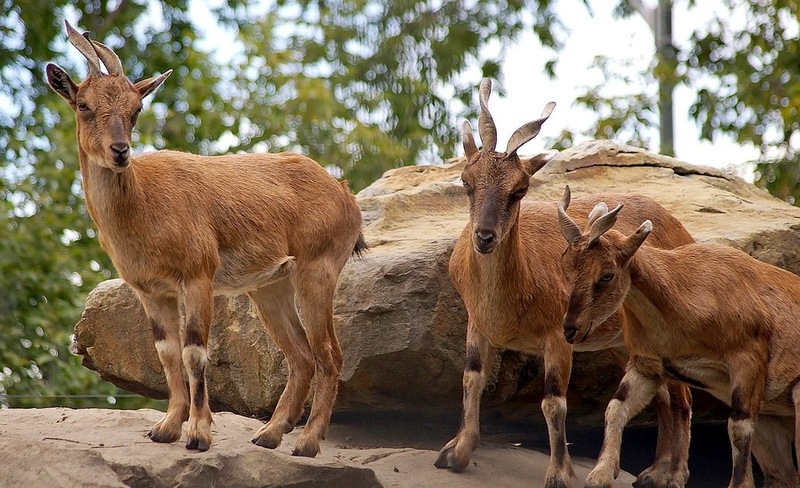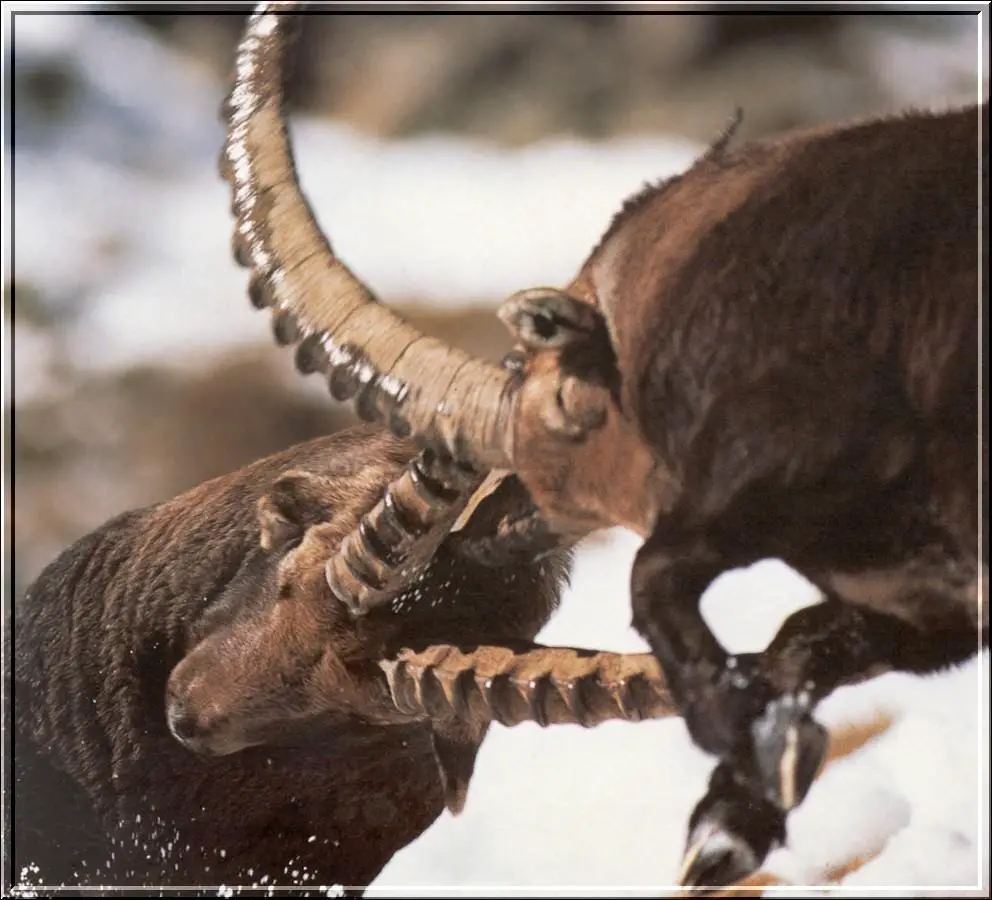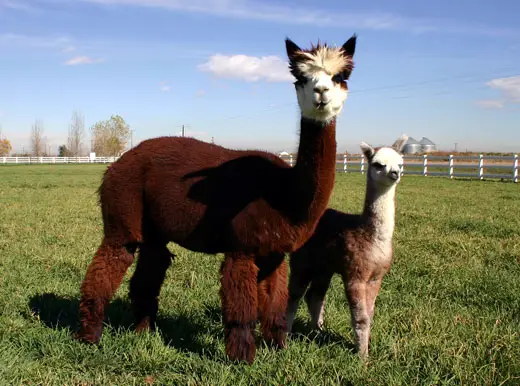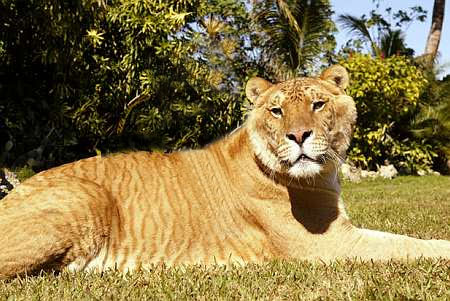Alpine Ibex
Males and females of Alpine Ibex live in separate herds, which are quite large and consist of males or females with cubs. Only very old bucks live alone. They usually live for about 10 to 20 years.
Only during the short period of mating the males and females live together. Usually the dominant male has a harem which consists of several females. The bucks of Alpine Ibexes have a very specific smell, just like other species of goats. Sometimes they even spray themselves with urine.
Since time immemorial the body parts of Alpine Ibex has been considered medicinal. This certainly was one of the reasons the Alpine Ibex almost became extinct. The development of many species of goats varies and Alpine Ibex with their behaviour and physique remind more of a sheep not a goat.
During the day time Alpine ibex is an active animal. It goes for a search of food early in the morning, slowly moving in the mountains and alpine meadows. They gnaw branches of trees and bushes, frequently ramps to get the leaves and branches. The most favourite diet for Alpine Ibex is grass. During the afternoon, because of the hot temperature, Alpine Ibex stays in lower areas. Alpine Ibex usually live in territories which are 2000-3000 m above the sea level. When compromised, the Alpine Ibex hide between cliffs. As they have perfectly developed sight, smell and hearing, they can feel the upcoming danger. Natural enemies of Alpine Ibex are wolves, bears, lynxes and foxes.
The mating period of Alpine Ibex is from December to the beginning of January. Rutting time lasts about ten days, and bucks are very wrought-up and aggressive. They begin mutual fights between each other, but the winner creates a harem of females.
During the fights the animals usually do not get any serious wounds. But one of the rivals can push the other into the abyss. The winner usually is the one who is the strongest and has the largest horns. The oldest male has the biggest harem, which can consist of more than 12 females. Together with the herd there also can be one or two males who are unable to mate with the female.
After 165 – 170 days, usually in June, the female gives birth to one, very rarely to two, cubs, which are taken care of very gently and they are nursed for about a year. The yeanling becomes independent right after birth and starts grazing on his own.




